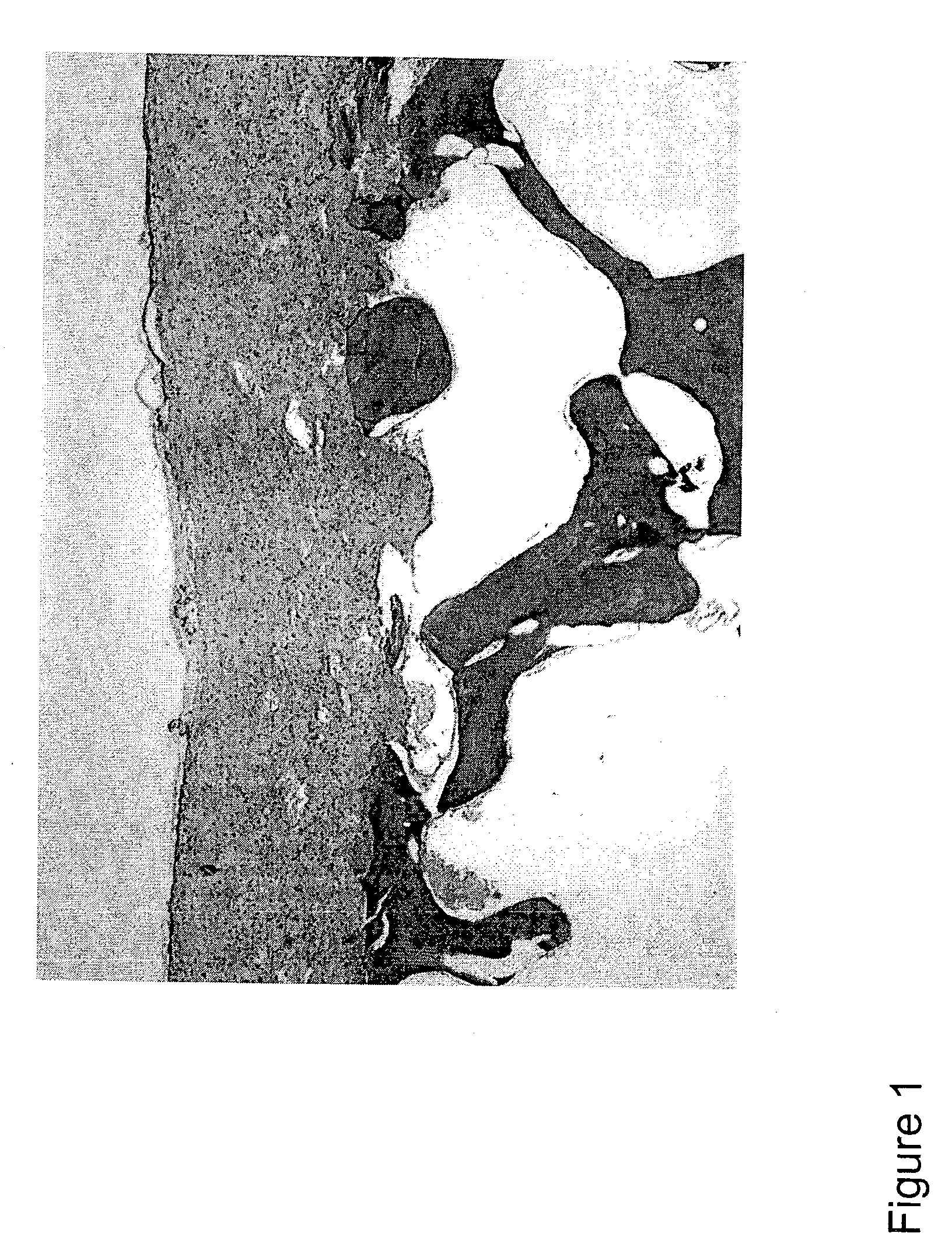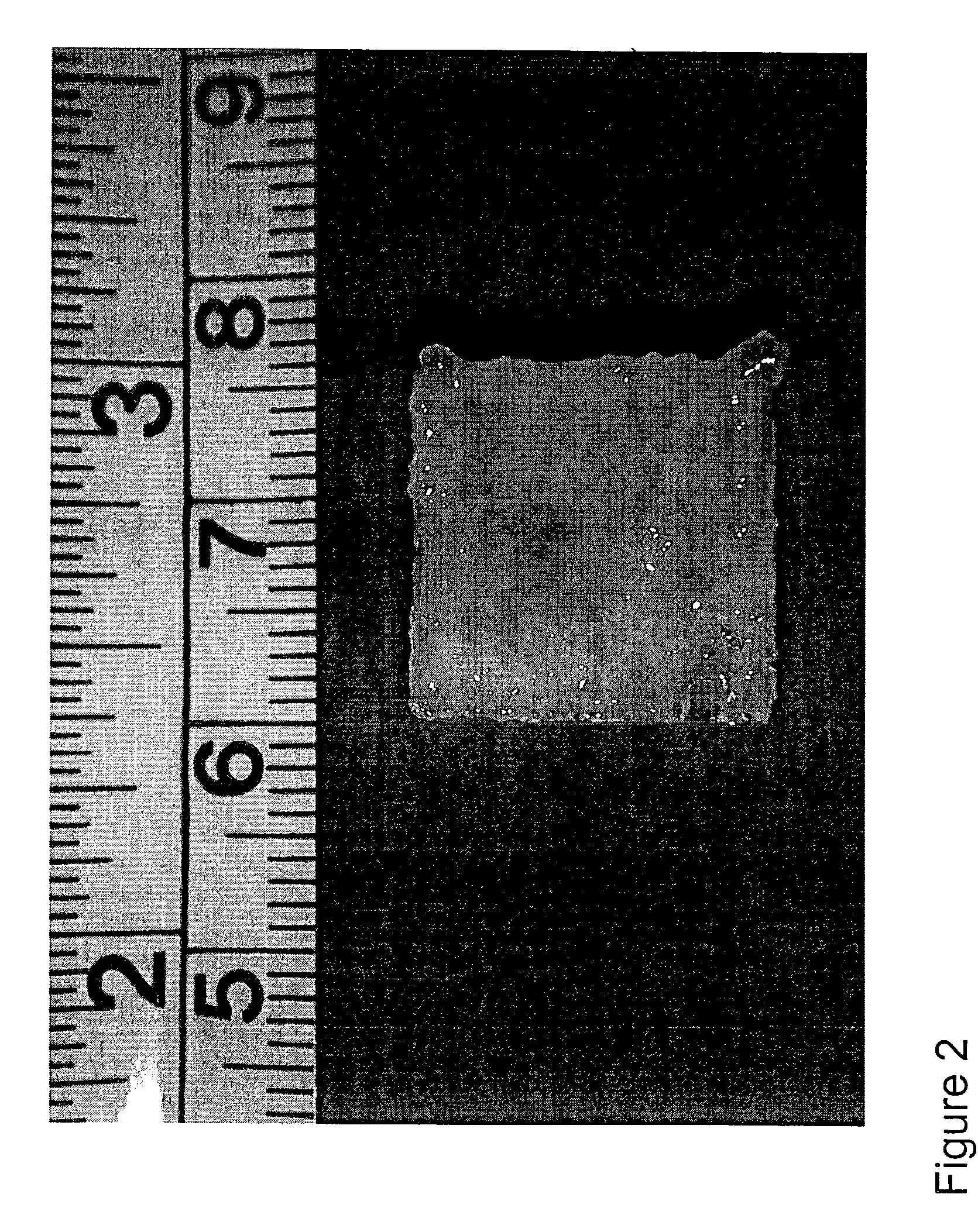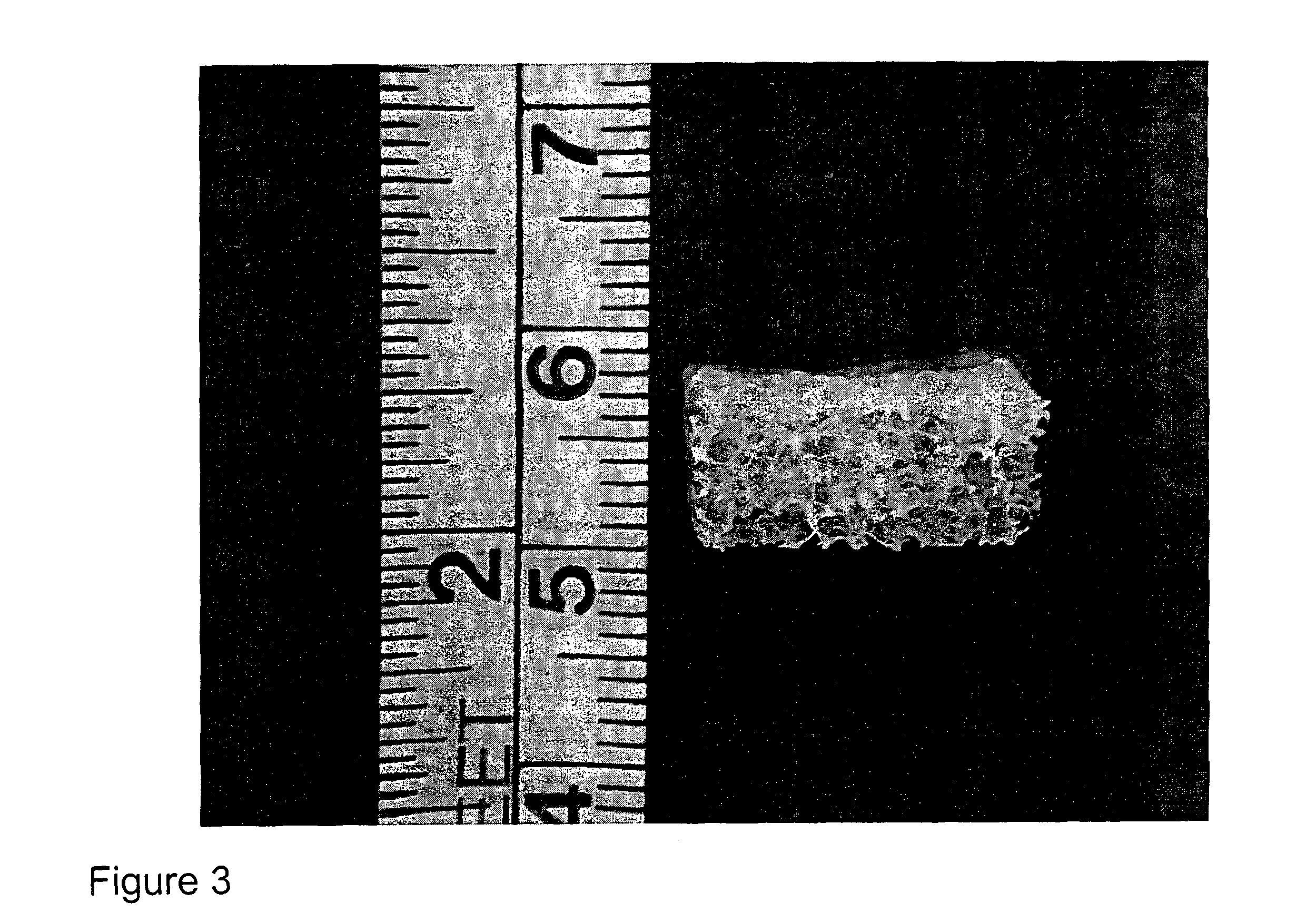Tissue engineered osteochondral implant
a technology implant, which is applied in the field of tissue engineered osteochondral implants, can solve the problems of limited repair response, articular cartilage, and lack of durability or mechanical properties of normal articular cartilage, and achieve the effect of small pore size and enhanced gravity
- Summary
- Abstract
- Description
- Claims
- Application Information
AI Technical Summary
Benefits of technology
Problems solved by technology
Method used
Image
Examples
Embodiment Construction
The present invention relates to a transplantable osteochondral implant and a method for its production. The implant includes engineered cartilage tissue attached to a biocompatible support scaffold. In the present methods, an osteochondral implant is produced in vitro by culturing isolated chondrogenic cells for an amount of time effective for the formation of a chondrogenic cell-associated matrix. The chondrogenic cells with cell-associated matrix are previously cultured on a porous biocompatible support scaffold in the presence of a growth factor, for a time effective for allowing both the formation of an engineered cartilage tissue and attachment of the engineered cartilage tissue to the biocompatible support scaffold.
The porous biocompatible support scaffold can be composed of natural cancellous bone, demineralized natural cancellous bone, or bone substitute material such as calcium phosphate, or collagen, or hydroxyapatite or a combination of these materials and is of a thickn...
PUM
| Property | Measurement | Unit |
|---|---|---|
| thickness | aaaaa | aaaaa |
| thickness | aaaaa | aaaaa |
| thickness | aaaaa | aaaaa |
Abstract
Description
Claims
Application Information
 Login to View More
Login to View More - R&D
- Intellectual Property
- Life Sciences
- Materials
- Tech Scout
- Unparalleled Data Quality
- Higher Quality Content
- 60% Fewer Hallucinations
Browse by: Latest US Patents, China's latest patents, Technical Efficacy Thesaurus, Application Domain, Technology Topic, Popular Technical Reports.
© 2025 PatSnap. All rights reserved.Legal|Privacy policy|Modern Slavery Act Transparency Statement|Sitemap|About US| Contact US: help@patsnap.com



